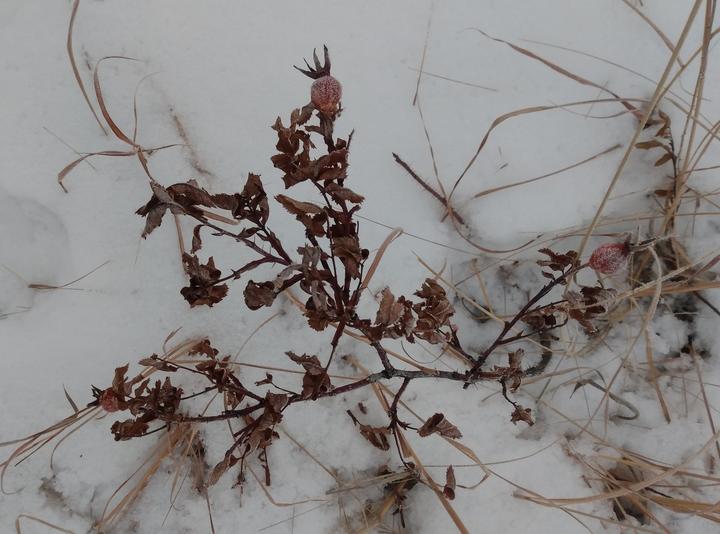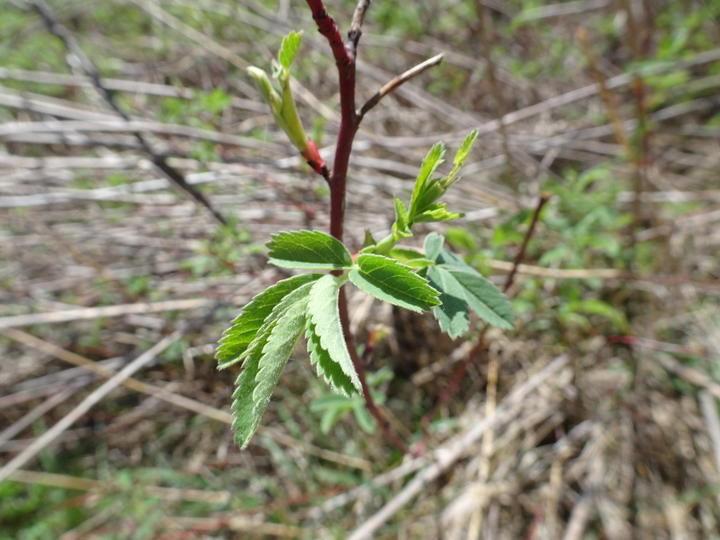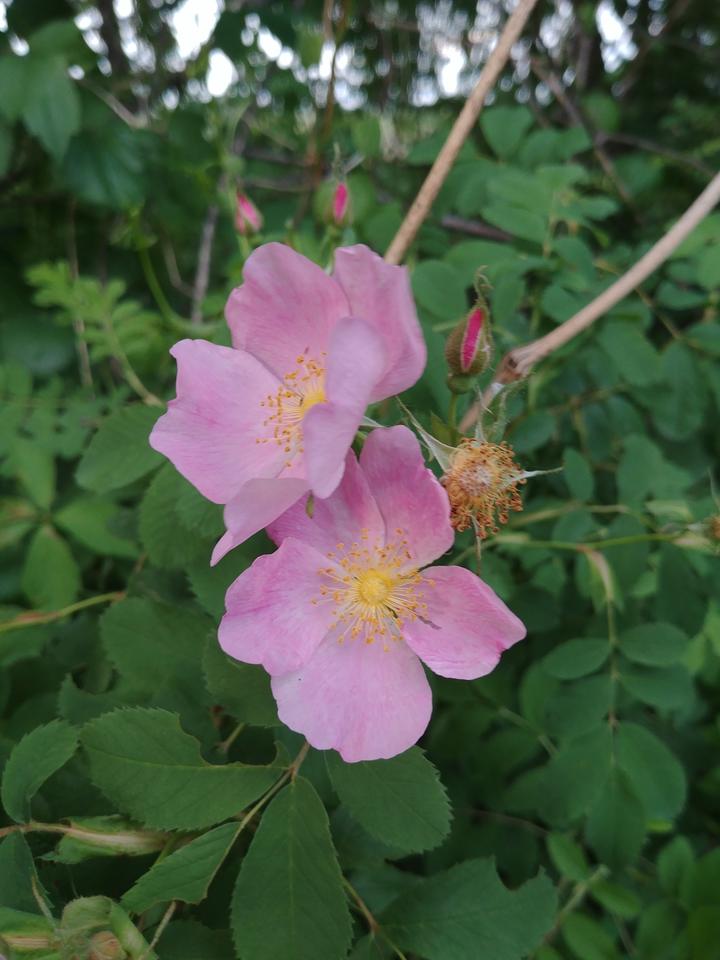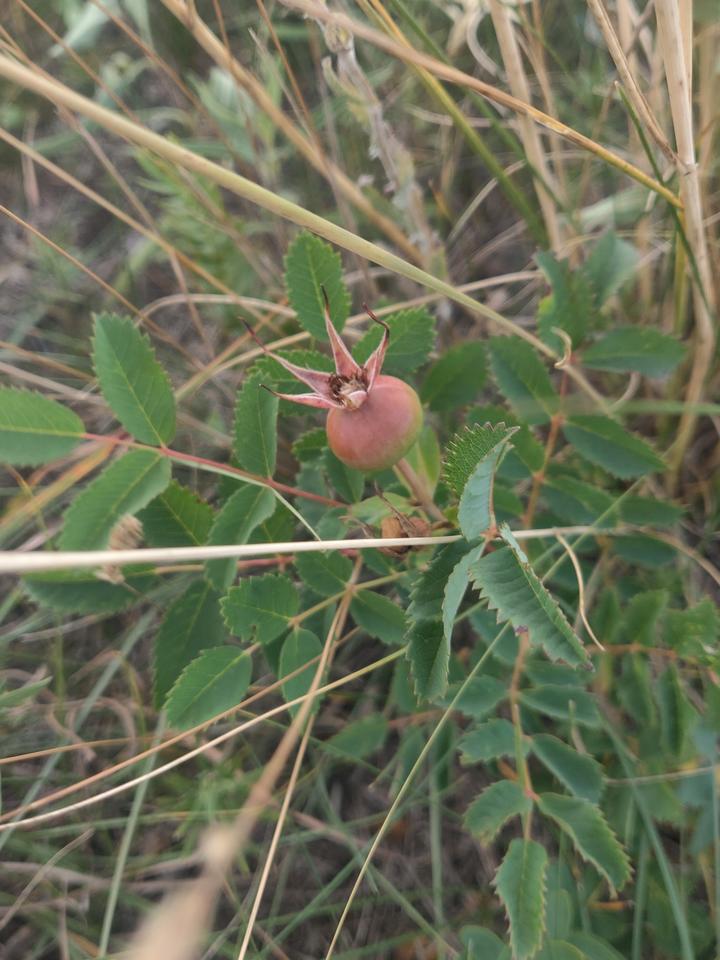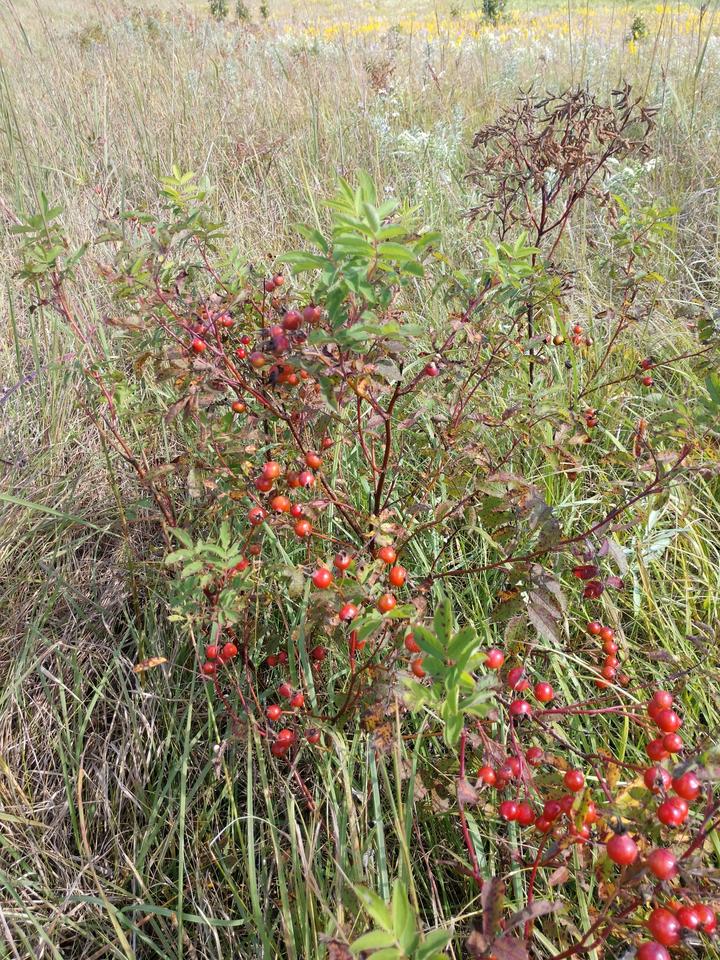More names for this plant
Anishinaabemowin: Oginii-waabigwan (rose), oginiiwaatig (rose bush)
The Dakota and Anishinaabe were among the earliest people to name Minnesota’s plants and animals, as well as to understand them in relation to Minnesota’s climate and seasons. Those original names are still in use, and several are included on the Season Watch website. However, complete translations were not available.
Latin (or scientific name): Rosa arkansana
The scientific community has a convention of assigning agreed-upon Latin names to every kind of organism. Using scientific names helps people communicate confidently about the same organism and organize lifeforms based on how closely related they are.
More common names: Arkansas rose, prairie wildrose, wild prairie rose, wild rose
Page contents
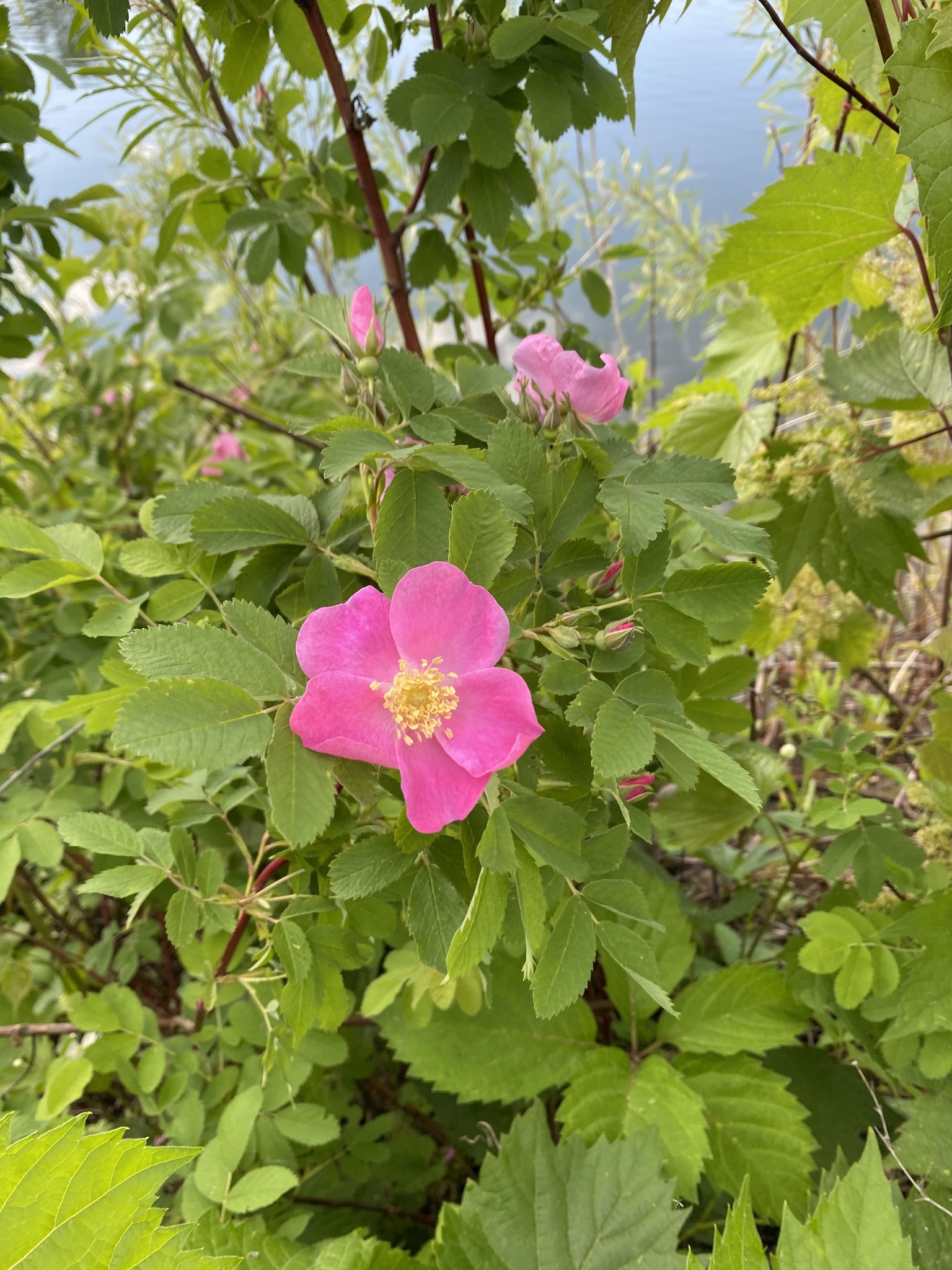
May 31, 2021, Hennepin County, Minnesota
Photo © allegradenton, some rights reserved (CC-BY-NC)
iNaturalist observation
About the prairie rose
- The prairie rose is a short, perennial, woody shrub with a spiny stem and compound leaves.
- It has pink flowers with five petals and yellow centers that bloom through June and July.
- These flowers attract plenty of pollinators, but bumblebees are especially fond of collecting from them.
- Their fruits, called rose hips, ripen and turn bright red in late summer.
- Rose hips are eaten by birds, which is how the prairie rose spreads its seeds.
- As their name suggests, prairie roses are most commonly found in the prairies of the southwest half of Minnesota.
Visual guide to phenology
Watch for the appearance of leaves, flowers, and fruits. Take notice of when flowers open and fruits ripen.
Note to observers
This page explains general clues to watch for when observing prairie rose phenology. However, this page does not instruct observers on how to identify this plant or collect data in a standardized way.
- For help with identification, see Minnesota Wildflowers.
- For guidance on collecting data, see Nature’s Notebook.
Graphs and historical data
Note: The Orientation Center provides a map, as well as information on reading graphs; interpreting summary statistics, who collected the data and how; and how to download datasets for independent exploration.
First flower
- Earliest: May 18 and 19 (occurred in 2012 and 1998)
- Average: June 4
- Latest: June 17 (occurred in 1997)
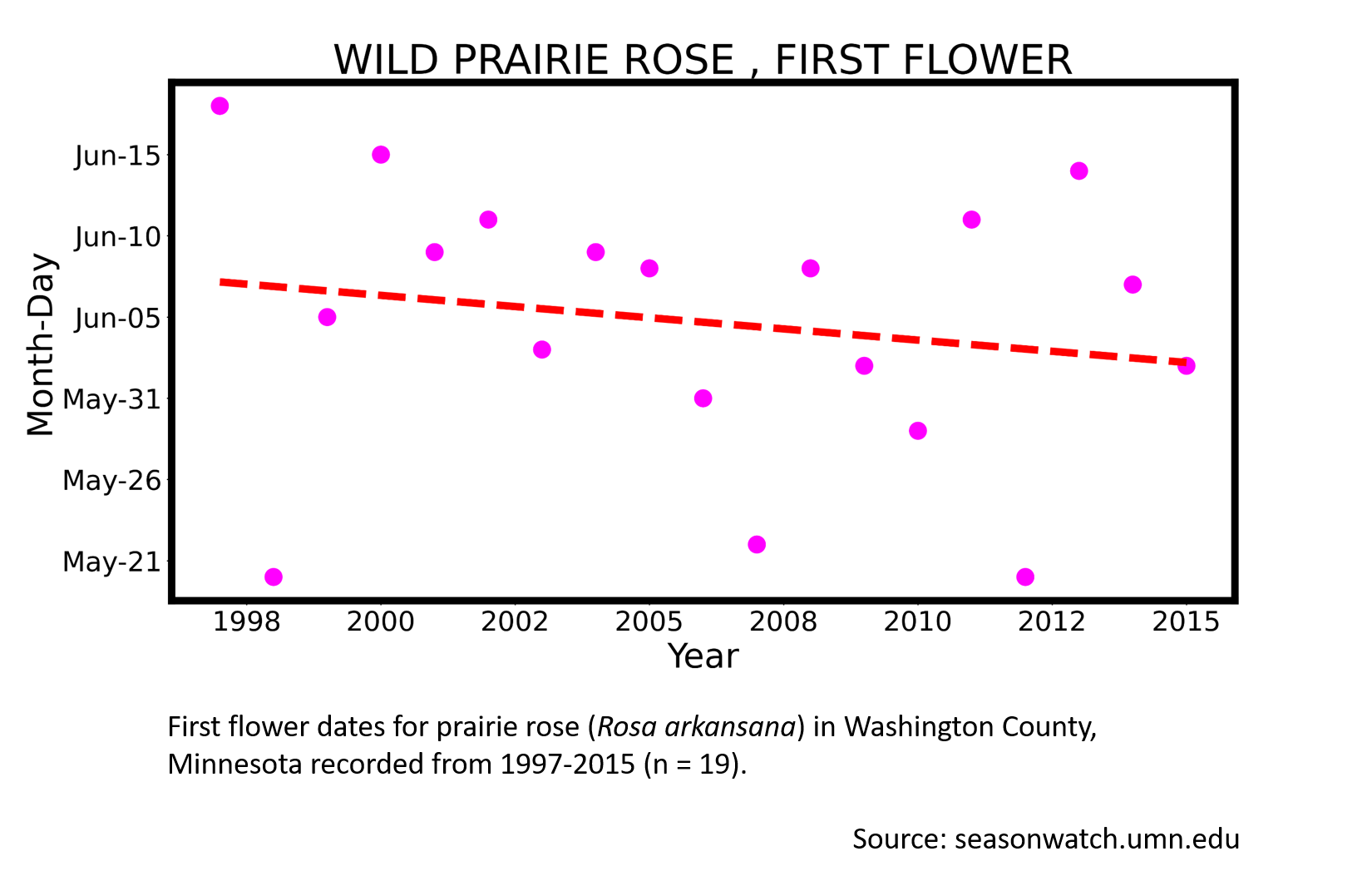
Last flower
- Earliest: June 23 (occurred in 2003)
- Average: July 24
- Latest: August 31 (occurred in 1999)
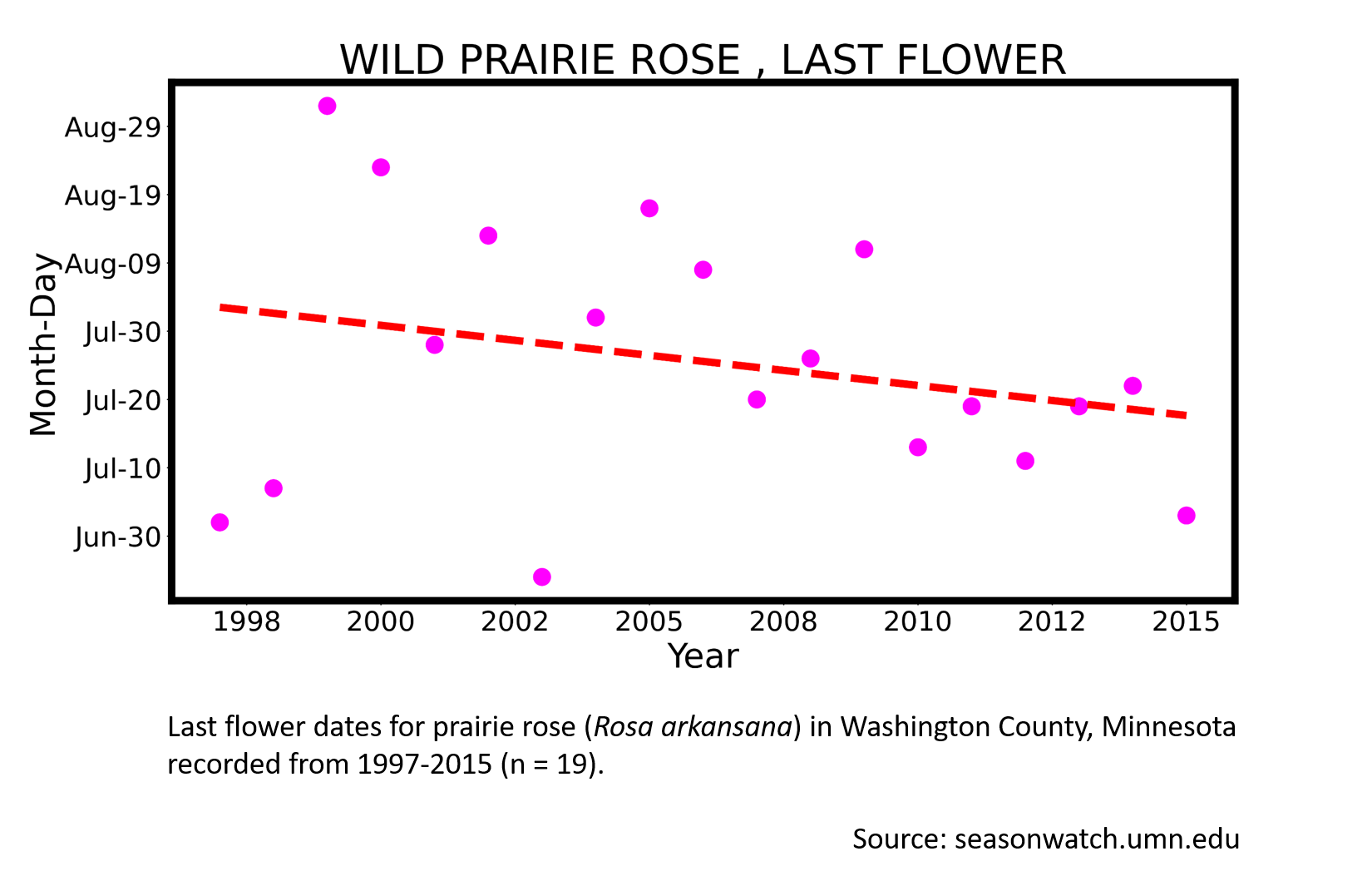
More resources
Keep exploring Season Watch
Keep exploring Season Watch
Co-author: Lynsey Nass, Minnesota Master Naturalist
